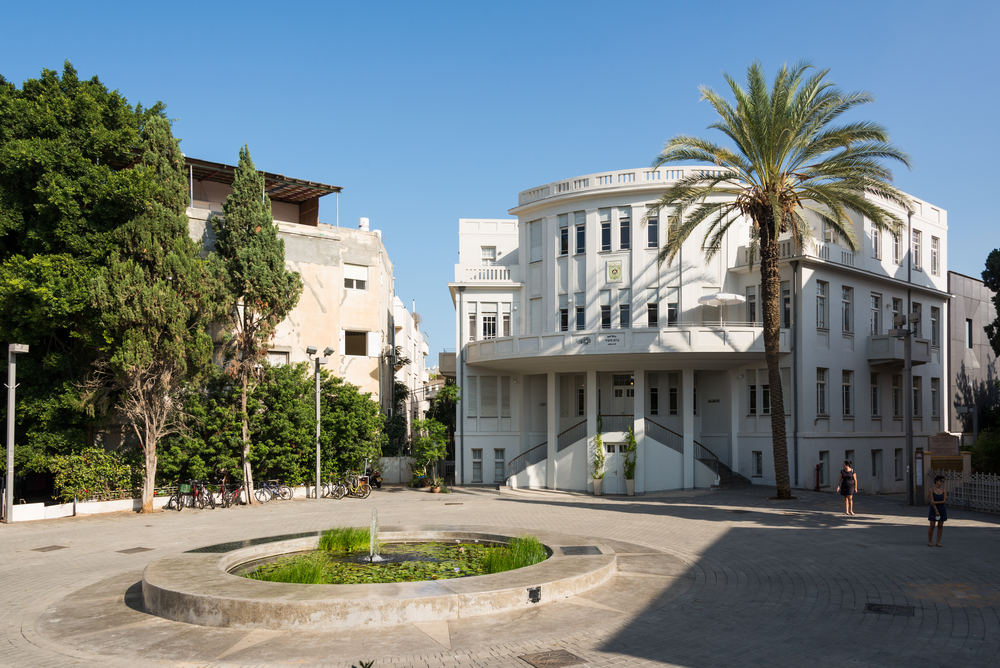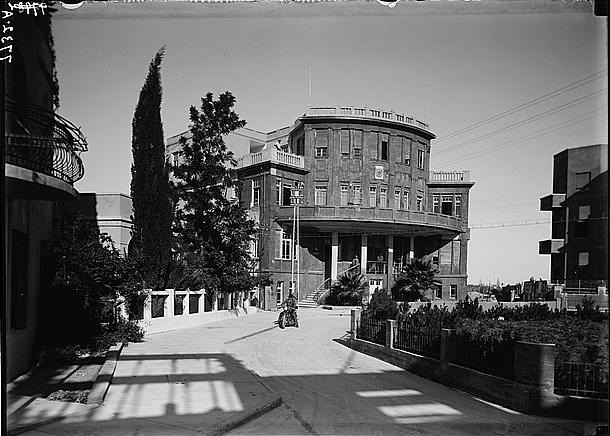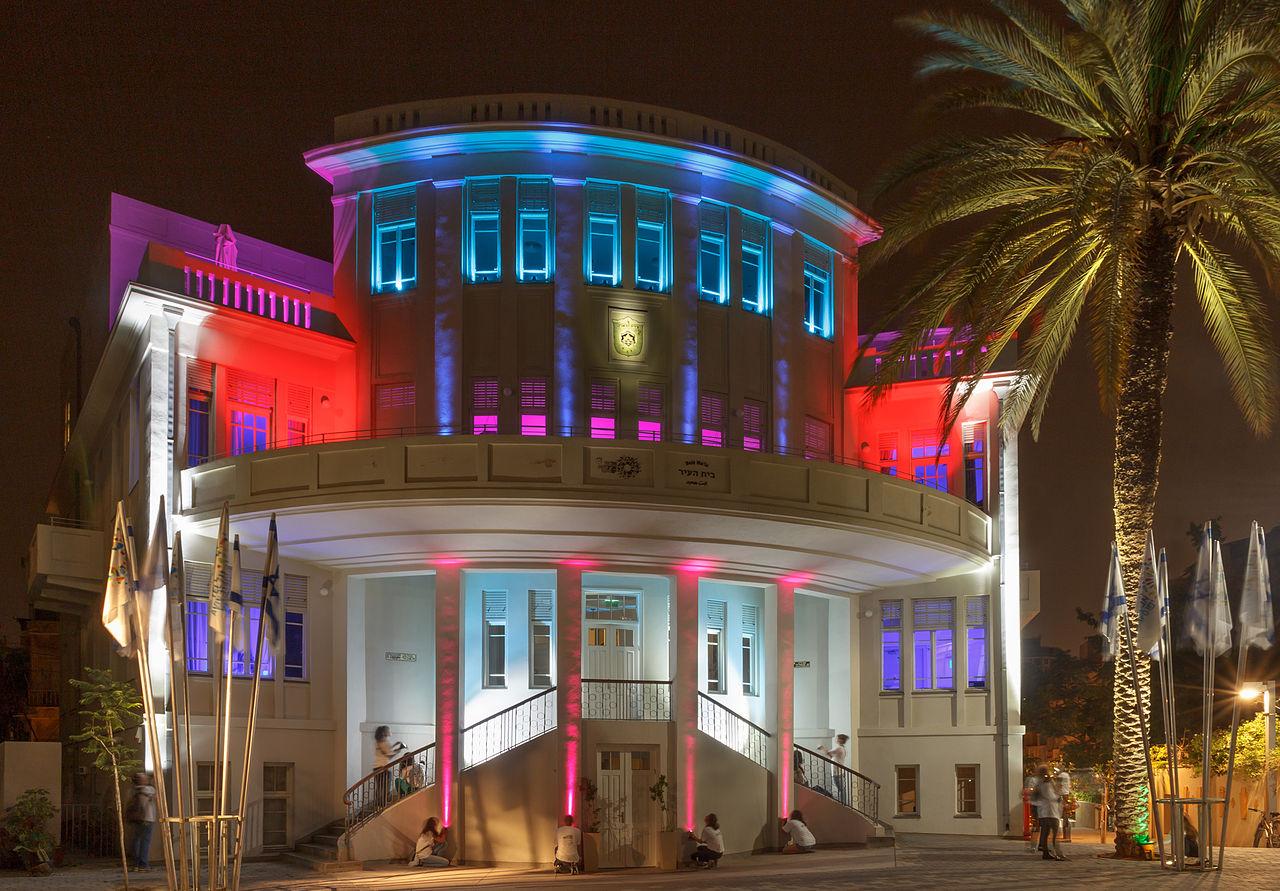Beit Ha’Ir Museum
Plan Your Visit
- Open Times: Sunday closed. Monday-Thursday 09:00-17:00; Friday, Saturday, and holidays 10:00-14:00.
- Prices: Free.
- Average Visit Duration: 30 minutes to 2 hours.
- Popular Times: Mid-day. If you just want to see the building’s facade, then visit at night when it is beautifully illuminated.
- Special Events: Special events are sometimes held at Beit Ha’Ir during Jewish national holidays and Christian holidays in Israel.
- Relevant Tours: Private Tel Aviv tours could include this museum; If you want to get the most out of Beit Ha’Ir it is highly recommended to see it with a PRO guide.
- The museum is located at 27 Bialek Street at the northern end of Allenby Street just behind Gan Meir. It's fully accessible, and you can combine your visit with a stop at the adjacent Bialik House or the nearby Bauhaus Museum and Reuben Reuven Museum.
Beit Ha’Ir translates as “the city house” or “town hall” and this museum is in the historic Tel Aviv City Hall. The museum focuses on the history of the city, and the building is an attraction in its own right.
 Welcome to Beit Ha'Ir Museum in Tel Aviv!
Welcome to Beit Ha'Ir Museum in Tel Aviv!
Beit Ha’Ir is part of the Bialik Complex, a hub of culture and entertainment. In addition to the museum exhibitions, Beit Ha’Ir also hosts special events and debates focused on Tel Aviv.
History of Beit Ha’Ir
This beautiful building was designed by Moshe Cherner, and built in 1925. Just 38 years previously a group of pioneering Jews had left the walled city of Jaffa to set up a new home, a city that would grow to become Tel Aviv. By the time Beit Ha’Ir was constructed, the British ruled Palestine, and Tel Aviv had become a thriving municipality in need of a city hall. Beit Ha’Ir was originally intended as an apartment hotel and owned by Philip and Isidore Skora. They named the building Beit A. Skoura, but soon after, leased and then sold the building to the municipality to be used as the town hall.
 Beit Ha'Ir in the late 1930s
Beit Ha'Ir in the late 1930s
It served as city hall from 1928 until 1965 when the mayor Meir Dizengoff had his office and hosted dignitaries in his chamber. Many well-known figures passed through Beit Ha’Ir including Ahad Ha’am, Bialik, and British cabinet ministers. when the municipal headquarters moved to a large building on Rabin Square.
The Museum of Tel Aviv History opened in Beit Ha’Ir in 1971, although some of the municipal archives remained on the top floor for several years. In 2003 the building became part of the “White City” a UNESCO-recognized part of Tel Aviv where there is an incredibly high concentration of Bauhaus architecture. Beit Ha’Ir itself is designed in the Bauhaus style. The building was restored and redesigned by architect Mayra Kovalsky to preserve the historic architecture and expand the museum’s exhibition space. The museum was renamed in the summer of 2023 and became the Tel Aviv City Museum.
What to See at the Beit Ha’Ir Museum
On the top floor of the museum is the recreated office of Tel Aviv’s first mayor, Meir Dizengoff.
The rest of the building has an open-plan exhibition space with regularly rotating exhibits that include photographs, videos, and authentic documents to tell the story of Tel Aviv’s history.
 Beit Hair night lights (Image source: Dana Menaker CC BY-SA 3.0)
Beit Hair night lights (Image source: Dana Menaker CC BY-SA 3.0)
The exhibits are more of a collection of stories, rather than displays, they are eclectic, and the museum format has been kept flexible. On display is an impression of the original tile floor, the historic staircase, and the study. But don’t expect to see a historic interior, as the inside of the building has been modernized to accommodate the exhibits. Among the displays is the Tel Aviv Time Machine. Take a virtual tour of the city’s history and see archive material including a computerized database. Pro Tip: Enjoy the view from Dizengoff’s office down the length of Bialik Street which is lined with Bauhaus buildings.
 Login / Register
Login / Register
 Contact Us
Contact Us
 Certificate of Excellence
Certificate of Excellence Guaranteed Departure
Guaranteed Departure Low Prices Guaranteed
Low Prices Guaranteed 24/7 Support
24/7 Support




